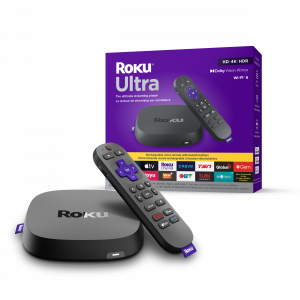TV viewing is a cornerstone in Canadian home entertainment, so what do we know about what’s popular these days?
 Roku Canada has released its annual Video on Demand Evolution study. The annual study examines Canadian TV streaming behaviours and trends. This is Roku’s fifth study of Canadians’ TV streaming habits and an update to its research in 2023.
Roku Canada has released its annual Video on Demand Evolution study. The annual study examines Canadian TV streaming behaviours and trends. This is Roku’s fifth study of Canadians’ TV streaming habits and an update to its research in 2023.
Streaming and the ‘new’ Prime Time
“A majority of Canadians (80 per cent) are now TV streamers,” shared Ivan Pehar, Director, Ad Sales, Roku Canada. “In fact, TV streaming is so mainstream now, that this was the first year since we launched the VOD study where we didn’t compare findings between streamers and non-streamers because, close to everyone is streaming.”
Added Pehar, “Now, the key division is between streamers and “addressable streamers,” or streamers that use ad-supported streaming services and are therefore, ‘addressable’ by advertisers.”
“According to the study, 69 per cent of Canadian TV streamers (or 55 per cent of all TV viewers) are addressable. This figure has grown by 64 per cent since 2023 thanks to the rise of ADSVOD (Ad-Supported Subscription Video on Demand) services, like Netflix and Disney+. Likewise, 46 per cent of TV streamers used at least one ad-supported subscription service, up from 31 per cent in 2023. Clearly, it makes sense for advertisers to integrate TV streaming into their ad strategies, wherever possible.”
Findings also highlight that over half of Canadians (58 per cent) are craving the best of both worlds: on-demand TV, and live and scheduled programming historically associated with cable TV.

Ivan Pehar
“This year’s report found traditional TV viewing preferences, like Live and Scheduled streaming that historically are associated with cable, are making a comeback through TV streaming,” stated Pehar. “52 per cent TV streamers now watch live TV through streaming platforms, such as FAST channels (Free Ad-Supported TV), creating a hybrid of live and on-demand viewing.”
“We’re also seeing the emergence a modern of ‘prime time’,” Pehar added. “Historically, cable TV’s prime time landed between the hours of 8-11 p.m., but today, prime time is slightly earlier, between 6-10 p.m. Interestingly, like the days-of-TV-past, ad-supported, on-demand streaming is the most popular form of streaming during this timeframe [with] 52 per cent of viewers watch ad-supported on-demand content this window).
“In addition to prime time, we’re seeing other key viewing periods like ‘real time’, between 6 a.m. – 10 a.m., where viewers are prioritizing live TV, like news or sports; and ‘make time,’ off-peak hours … where on-demand content is popular for during binge-watching or discovery.”
What are Canadians watching?
 “When it comes to genres Canadians love streaming, dramas take the cake: 96 per cent of streamers like watching any kind of drama,” said Pehar. “This is followed by documentaries (92 per cent) and comedies (88 per cent). Interestingly, we see comedies increase in popularity among addressable streamers (90 per cent) versus all streamers.”
“When it comes to genres Canadians love streaming, dramas take the cake: 96 per cent of streamers like watching any kind of drama,” said Pehar. “This is followed by documentaries (92 per cent) and comedies (88 per cent). Interestingly, we see comedies increase in popularity among addressable streamers (90 per cent) versus all streamers.”
“We’re also seeing a strong preference for programming in languages other than viewers’ native/preferred language, like due to the diversity of the Canadian population,” remarked Pehar. “Half of TV streamers are watching content in a language other than their native tongue. Anglophone streamers are increasingly watching non-English content, while Francophone viewers spend nearly half their viewing time with non-French content.”
Impact for Advertising
Understanding TV behaviours and content preferences will translate into advertising trends, too.
“Addressable TV streamers are highly engaged with advertising,” explained Pehar. “They also tend to skew younger (36 per cent under age 35), are more likely to have kids, and watch more TV than non-addressable viewers (23.3 hours per week vs. 20.4 hours).”
Pehar elaborated upon other findings related to advertising:
- 51 per cent of streamers prefer ads unrelated to the show or movie they’re watching, while the other 49 per cent prefer ads connected to the content (e.g., ‘Sponsored by…’).
- 74 per cent of TV streamers have taken action after seeing ads, such as visiting a brand’s website or adding items to a shopping basket.
- QR codes and TV remote-based interactions in advertising are growing in popularity: 20 per cent of streamers scanned a QR code in 2024, up from 17 per cent in 2022.
- Eight in 10 TV streamers believe AI-generated ads should be labeled, particularly when it involves recreating voices or images of people who have passed away.
- When it comes to their preferences about ads, streamers are nearly evenly split (49/51) on to personalize ads or not.
-30-
More articles on streaming



